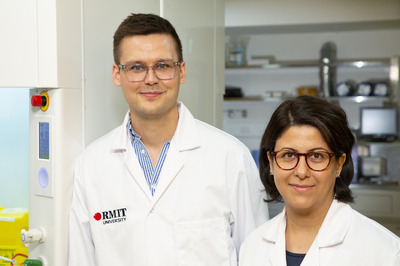RMIT scientists make breakthrough that could transform carbon capture and storage
Researchers have used liquid metals to turn carbon dioxide back into solid coal, in a world-first breakthrough

The research team led by RMIT University in Melbourne, Australia, have developed a new technique that can efficiently convert CO2 from a gas into solid particles of carbon.
Published in the journal Nature Communications, the research offers an alternative pathway for safely and permanently removing the greenhouse gas from our atmosphere.
Current technologies for carbon capture and storage focus on compressing CO2 into a liquid form, transporting it to a suitable site and injecting it underground.
But implementation has been hampered by engineering challenges, issues around economic viability and environmental concerns about possible leaks from the storage sites.
RMIT researcher Dr Torben Daeneke said converting CO2 into a solid could be a more sustainable approach.
Lead author, Dr Dorna Esrafilzadeh, a Vice-Chancellor’s Research Fellow in RMIT’s School of Engineering, developed the electrochemical technique to capture and convert atmospheric CO2 to storable solid carbon.
To convert CO2, the researchers designed a liquid metal catalyst with specific surface properties that made it extremely efficient at conducting electricity while chemically activating the surface.
The carbon dioxide is dissolved in a beaker filled with an electrolyte liquid and a small amount of the liquid metal, which is then charged with an electrical current.
The CO2 slowly converts into solid flakes of carbon, which are naturally detached from the liquid metal surface, allowing the continuous production of carbonaceous solid.
















